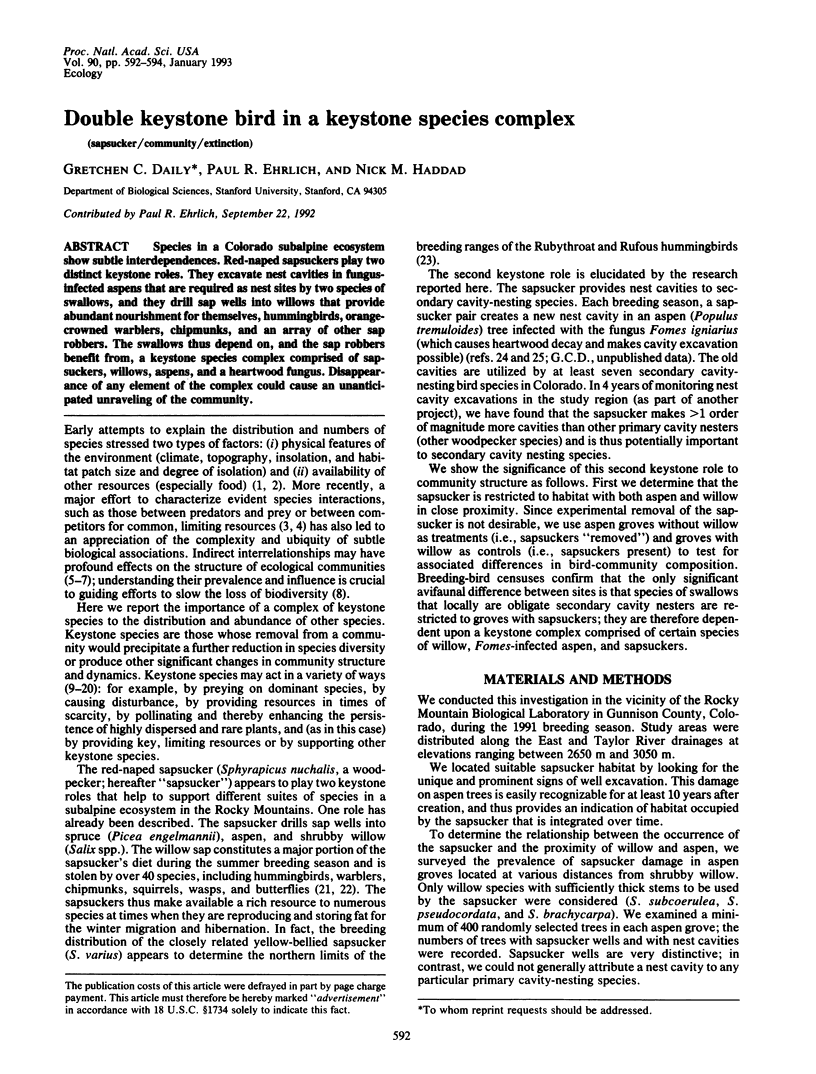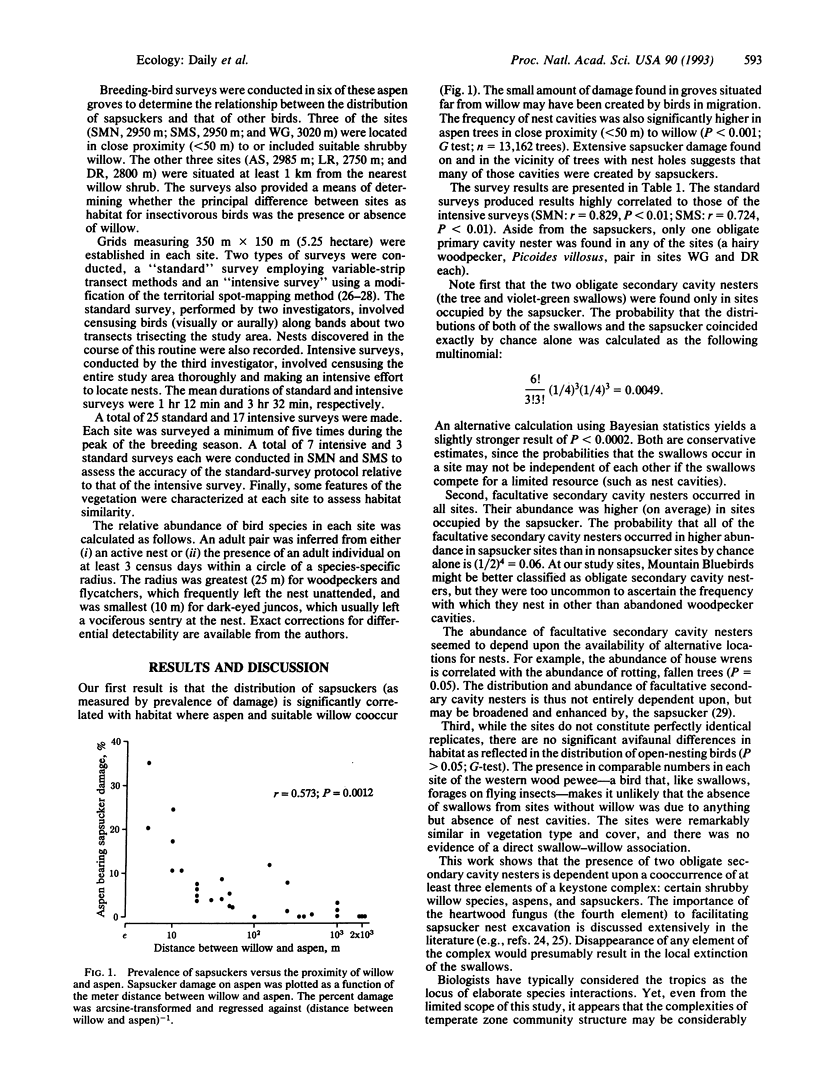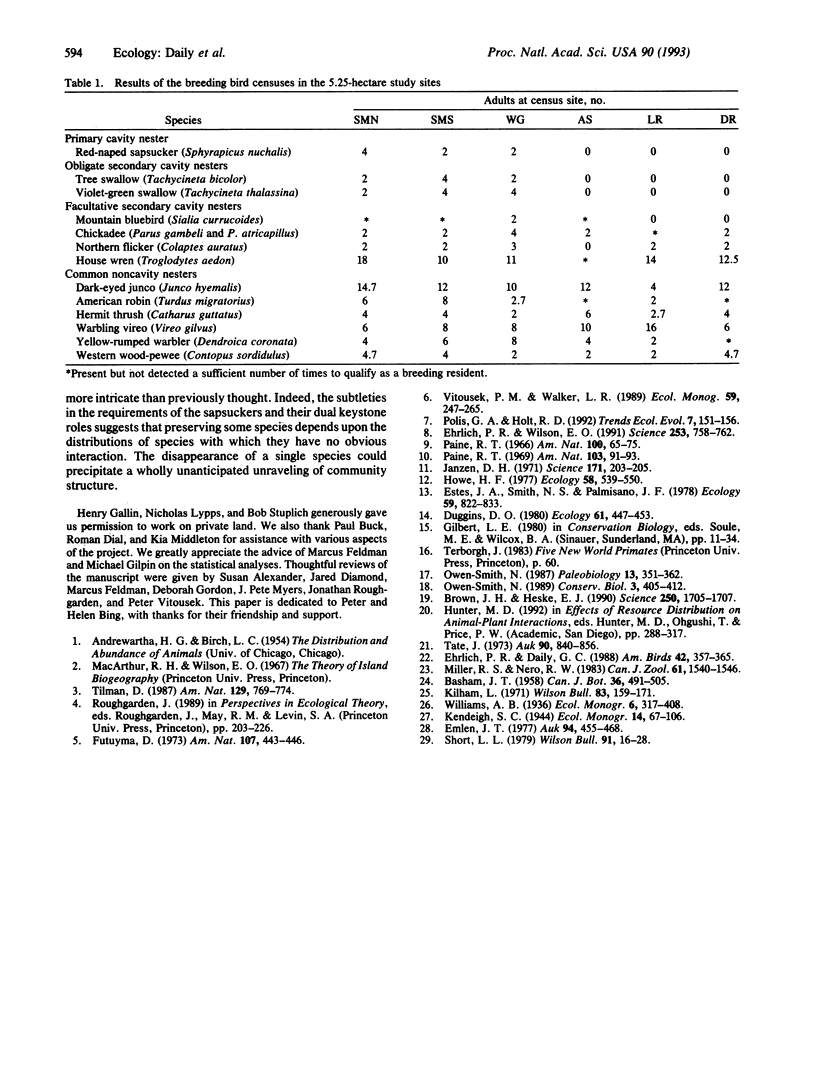Abstract
Species in a Colorado subalpine ecosystem show subtle interdependences. Red-naped sapsuckers play two distinct keystone roles. They excavate nest cavities in fungus-infected aspens that are required as nest sites by two species of swallows, and they drill sap wells into willows that provide abundant nourishment for themselves, hummingbirds, orange-crowned warblers, chipmunks, and an array of other sap robbers. The swallows thus depend on, and the sap robbers benefit from, a keystone species complex comprised of sapsuckers, willows, aspens, and a heartwood fungus. Disappearance of any element of the complex could cause an unanticipated unraveling of the community.
Full text
PDF


Selected References
These references are in PubMed. This may not be the complete list of references from this article.
- Brown J. H., Heske E. J. Control of a desert-grassland transition by a keystone rodent guild. Science. 1990 Dec 21;250(4988):1705–1707. doi: 10.1126/science.250.4988.1705. [DOI] [PubMed] [Google Scholar]
- Ehrlich P. R., Wilson E. Biodiversity studies: science and policy. Science. 1991 Aug 16;253(5021):758–762. doi: 10.1126/science.253.5021.758. [DOI] [PubMed] [Google Scholar]
- Janzen D. H. Euglossine bees as long-distance pollinators of tropical plants. Science. 1971 Jan 15;171(3967):203–205. doi: 10.1126/science.171.3967.203. [DOI] [PubMed] [Google Scholar]


